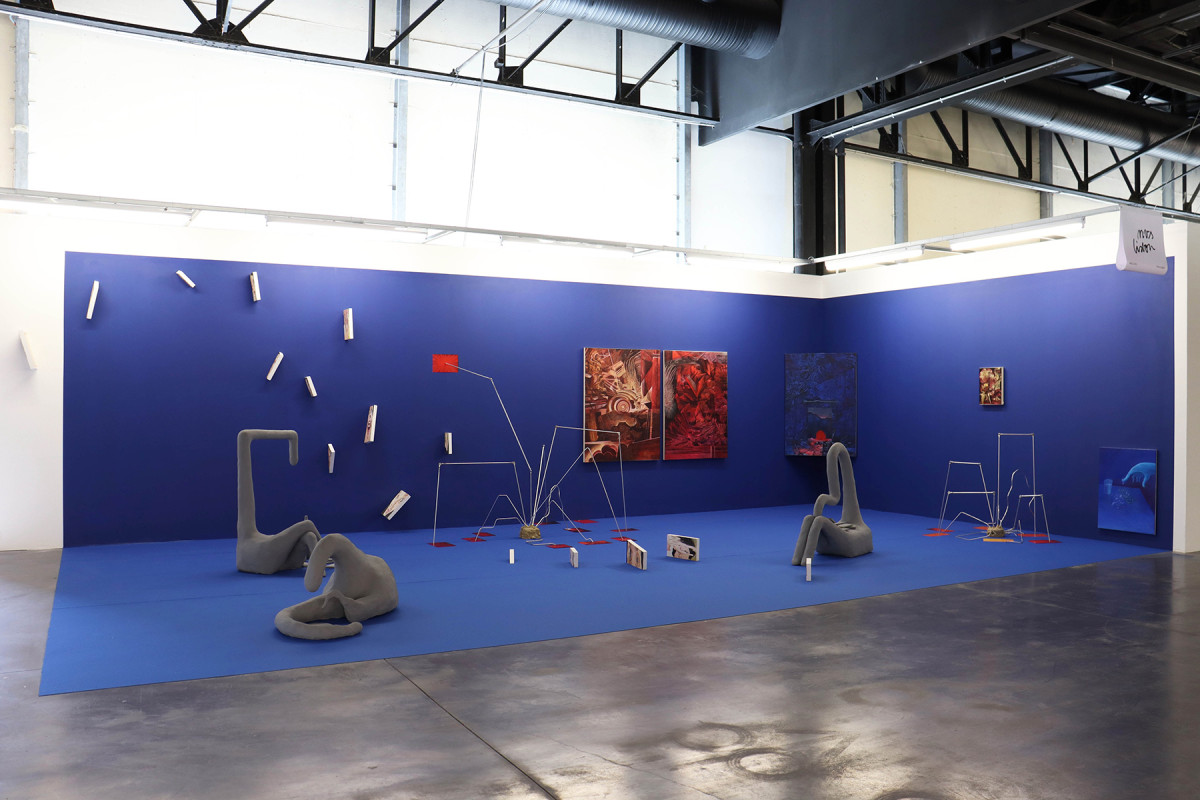August
2021
For Art-o-Rama 2021 Ramiro Quesada Pons will present a large-format installation emulating a monochrome set where the connections with the digital world are introduced in an analogical way. To this end, he takes from the digital window and the connection to the networks that the virtual communication world is bringing forward, its images, algorithms and references. A journey that displays “reality” as science fiction. A matrix spider capable of funneling a selection of capricious google images on a single point. Manufactured sculptures emulating our resting body positions in front of the screens. A series of monochrome paintings of the human-machine relationship.
For “love-letter-for-you.txt.vbs“ Laura Ojeda Bär shows a series of works that, like the namesake computer worm, pop up unexpectedly in different places. It’s comprised by 17 oil on wood panels, painted on both sides. On the one side, It self replicates Ojeda Bär’s melting vissage over and over again like internet spam, clouding the general view of wherever it appears. Rethinking the tradition of painting as a window to the world outside, each piece surging aggressively from the wall and floor, reminiscent of Lucio Fontana’s gashes, piercing the pictorial surface. On the back side of each panel, a wooden stretcher and canvas is painted upholding the general ilusion where nothing is what it seems. This series of works continues the investigation the artist has been delving into for the last few years with hybrid works between painting and sculpture, focused on the continued battle between images and objects.
In turn, Matías Ercole’s work “Historia de un rayo” [The History of A Lighting] is located in the corner of the stand: a large-format triptych looming as a large window that breaks through with a diagonal plane at the vertex of the composition. Ercole constructs his images through the subtraction of darkness, within the sgraffito tradition. Emulating the first photographic investigations and through these mysterious and dreamlike images, Ercole discovers other dimensions, where light is the one who reveals shapes, distances and colors.
The presence of the painting-window or window-painting in the stand asserts the human link with the fictional dimension, with Ercole’s interest in the tableau format, very typical of painting, and its limits. Which is clearly related to the idea of the digital window as a possibility to look and enter another dimension.



